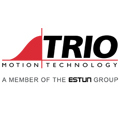
Posted to News on 26th Mar 2025, 17:00
Roles for robots in cleanroom manufacturing environments
Introducing robots to automate handling and assembly processes in cleanrooms can increase quality and productivity, provided the equipment meets appropriate ISO standards for cleanroom-ready equipment, as the experts at Yamaha Factory Automation explain.

Quantum computing, New Space, and smart mobility are some of today's most exciting innovations. Producing critical components and subsystems, such as multi-qubit processors, satellite transceivers, and EV batteries, calls for extreme precision, cleanliness, and reliability. High-purity cleanrooms are needed and commercialisation of these facilities also demands suitable automation inside, including robots specially designed to meet international cleanroom standards.
ISO 14644 is the international standard covering the design and operation of cleanrooms, and comprises multiple parts that describe all applicable aspects including construction materials, protective clothing, precautions to be taken on entry and exit, and environmental categories defined by air quality. ISO Classes 8 and 7 are the most common cleanroom environments used by industrial companies. Class 7 allows 10,000 particles of size greater than 0.1 micron per cubic metre, while Class 8 permits 100,000 particles per cubic metre.
General pharmaceutical production typically takes place in ISO Class 7 cleanrooms, as well as assembly of medical devices, aerospace equipment such as satellites, and automotive electronics. On the other hand, ISO Class 8 is appropriate for a wide variety of manufacturing facilities and sensitive electronics assembly. As regulations and operational requirements in these sectors become stricter, the required standards are moving towards tougher standards such as Class 5. On the other hand, activities like semiconductor manufacturing, satellite optics, biotech, and some medical nanotechnology processes already demand ISO Class 4 and higher.
Cleanroom construction and management
To satisfy specified air-quality standards, incoming air is filtered to prevent large particles entering from outside. It is also important to consider how equipment and staff can introduce contaminants when inside the cleanroom.
Among the specifications aimed at preventing this kind of contamination, cleanroom construction guidelines mandate the use of non-shedding materials that do not easily release impurities such as dust, microbes, or fibres into the surrounding environment. Stainless steel is often used, for its non-porous surface characteristics as well as corrosion and wear resistance. Non-porous polymers and specialised anti-static and low-particulate plastics are also used effectively.
Recognising that human workers are a major source of unwanted contaminants, released from skin and clothing, rigorous cleaning and adherence to dress codes and changing at entrances and exits is a minimum requirement. Alternatively, automating as many processes as possible to minimise the number of workers needed can relieve burdensome hygiene protocols and improve the environment inside the cleanroom.
Robots are ideal to take over activities such as transporting, unpacking, picking, and placing components, building assemblies, and packaging completed products. However, if not designed carefully, these, too, can emit unwanted contaminants into the cleanroom environment.
Special features of cleanroom robots
The SCARA format is often the first choice of system integrators seeking to solve industrial handling challenges. For general-purpose, non-cleanroom use, belt-driven mechanisms provide acceptable strength and accuracy at a price that can be affordable for smaller manufacturers as well as large corporations.
In a cleanroom, belt drives and other standard components such as bearings and actuators experience wear that can emit quantities of particulates into the surrounding environment that would be unacceptable in a cleanroom. To overcome this, SCARA machines like Yamaha's YK-XGC robots are specially designed for cleanroom use and contain durable beltless drives that minimise the wear rate in moving mechanisms. The Z-axis spline, which is typically exposed in non-cleanroom variants, is covered with a bellows made of a material with low dust generation. Also, other sliding parts as well as bearings and motors are sealed completely to keep any lubricants and dust inside.
In the same way that non-shedding materials are prescribed for cleanroom walls and other surfaces, the outer casings and panels of cleanroom robots are made from materials such as stainless steel as well as polycarbonates and low-outgassing or anti-static plastics. However, non-shedding materials are not a "fit and forget" solution. Equipment operators must care properly for the surfaces, including cleaning and maintenance to prevent corrosion or damage from compromising the non-shedding properties.
Where non-shedding materials cannot be used, such as in harnesses and cables, these are incorporated completely within the robot. Internal suction, built into the base of the robot, provides additional protection to prevent any particulates that may be generated from escaping. These cleanroom-specific SCARA robots are compliant with ISO 14644-1 for use in cleanrooms operating up to ISO Class 4 and Class 3 standards, enabling them to address some sensitive applications.
Recently, new YK-XEC cleanroom SCARA robots arrived, combining cleanroom features with cost-conscious principles suitable for use in ISO Class 4 environments. These robots are available in sizes from 400mm to 710mm arm length and payload capacity from 4kg to 10kg. They combine a compact design for low overall height with an optimised arm structure that reduces vibration and allows higher excursion speed that significantly reduces the cycle time.
For moving heavy objects weighing up to 120kg and more, across distances from 50mm to more than two metres, cleanroom-compatible single-axis robots are available built with stainless steel for the slide table surface. The slider section uses roller bearings to prevent dust generation by minimising friction. Other internal mechanisms are lubricated with special low-dust grease and an easily accessible suction port facilitates purging foreign objects as well as preventing dust from being emitted. Together, these features ensure compliance with ISO Class 3 cleanliness specifications.
Similarly, XY-XC clean cartesian robots for ISO Class 3 environments feature stainless steel construction and are available with two, three, or four axes. With excursion speed up to 1000mm/s and leveraging the same high-speed ZR-axis actuator of the SCARA robots, these robots ensure a fast cycle time.










